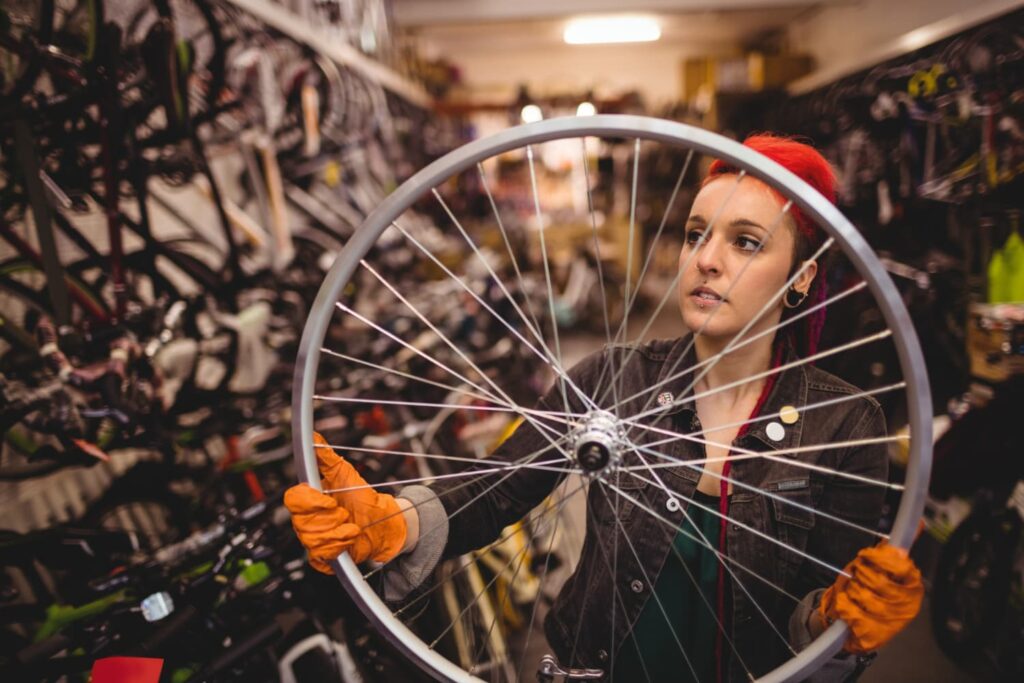A complete guide to choosing the right MTB tire size
When it comes to mountain biking, one of the most crucial components that can make or break your ride is the tire. Choosing the right tire size is not just a matter of preference, it directly influences your performance, comfort, and safety on the trails. With so many options out there, it can feel a bit overwhelming. Fear not! Let’s break it down and make the tire selection process a little less daunting.
Understanding mountain bike tire sizes
Mountain bike tires are generally measured in two ways: **diameter** and **width**. These measurements tell you how big the tire is and how much grip it provides. Let’s delve deeper into what these terms mean and why they are important.
Diameter
The diameter of the tire typically comes in three standard sizes: 26 inches, 27.5 inches (also known as 650B), and 29 inches. Each diameter has its advantages and drawbacks.
- 26 inches: This size was once the gold standard for mountain biking. They’re nimble and easier to maneuver, which is great for technical trails.
- 27.5 inches: This is a middle ground. They offer better rolling efficiency than 26-inch tires while retaining some agility. Perfect for those who can’t decide.
- 29 inches: Taller wheels roll over obstacles more easily. This size gives you a smoother ride over rough terrain, making them popular among cross-country riders.
I remember switching from 26-inch to 29-inch tires—it felt like upgrading from a little bike to a monster truck. Suddenly, I was rolling over rocks and roots without even a thought. It was fantastic!
Width
Width is measured in millimeters and usually falls between 2.1 inches to 2.5 inches for mountain bikes. Wider tires provide better grip but can also add resistance. Here’s how to think about it:
- Narrow tires (2.1-2.3 inches): These are excellent for smoother trails and faster rides. They give speed and provide less rolling resistance.
- Wider tires (2.4-2.6 inches): If you ride technical trails with rocks and roots, go wider. They offer improved traction and comfort, especially when you’re bouncing off obstacles.
I tend to lean towards wider tires on rugged trails. You never know when that surprise boulder will pop up out of nowhere, and trust me, having that extra grip feels like having a secret weapon!
Choosing the right tire size based on your riding style
Your riding style plays a vital role in determining the best tire size for you. Here’s a handy breakdown to consider:
Cross-country riding
For those who love to race or ride long distances on smooth, rolling trails, a narrower tire with less tread is ideal. A size around 2.1 inches to 2.3 inches is generally faster, allowing for more efficient pedaling and less drag.
Trail riding
If you enjoy a mix of climbs and descents, consider a mid-range tire size like 2.3 inches to 2.5 inches. This width offers a balance of speed and grip. Look for a tread pattern that can handle both rocky climbs and slippery descents. The versatility is key!
All-mountain or Enduro riding
These styles require a more aggressive approach. Opt for tires in the 2.4- to 2.6-inch range. You want something that can tackle big drops, gnarly rocks, and everything in between. Think about thicker sidewalls and more tread for traction.
Dirt jumping and BMX
For those hitting the dirt jumps or pumping around the skate parks, you want something that can support hard impacts. Tires in this category are usually wider, around 2.3 inches to 2.5 inches, with a tough rubber compound for durability.
Conditions matter
Your local terrain and climate are significant factors when it comes to choosing the perfect tire size. Let’s break it down based on different conditions you might face.
Dry conditions
On dry, hard-packed dirt, you can get away with narrower tires. The lower rolling resistance will help you maintain speed. Aim for tires with a tighter tread pattern to minimize drag.
Wet and slippery conditions
When it starts raining or you’re riding on muddy trails, wider tires will come to the rescue! They can displace water better and provide greater traction. Look for tires with aggressive, spaced-out knobs to dig into the mud.
Rocky and technical trails
If your trail is littered with rocks or roots, wider tires will give you a cushier ride. Plus, they will roll over obstacles more smoothly, making for a more pleasant experience. Opt for a sturdier sidewall to prevent pinch flats.
Tread patterns and their impact
Now that we’ve unpacked size let’s move on to tread patterns. The right tread can make all the difference in your ride quality.
Knobby treads
Heavy-duty knobby tires work well for trails that require traction and grip on loose surfaces. They are perfect for off-road conditions but may feel sluggish on paved paths.
Slick or semi-slick treads
These tires shine on hard-packed trails or smooth pavement. Their minimal tread allows for speed and efficiency but lacks grip in loose or wet conditions.
Personal preferences and fit
Besides the technical aspects, don’t forget that personal preference plays a significant role. A tire size may check all the boxes but still doesn’t feel right to you. Make sure to test various sizes if you can. Here are some tips for that:
- Visit your local bike shop. They often have demo days where you can try different bikes equipped with various tires.
- Join group rides. You’ll hear opinions and experiences from seasoned riders about what works best for them.
- Consider your bike’s frame. Some frames have restrictions on tire size due to clearance. Check your specifications to avoid heartbreak.
Conclusion
Choosing the right MTB tire size is a balance of understanding your riding style, local terrain, and personal preference. Remember, the perfect tire for your friend may not necessarily be the best for you. The more you ride, the more you’ll discover what works for you and your bike. Happy riding!






